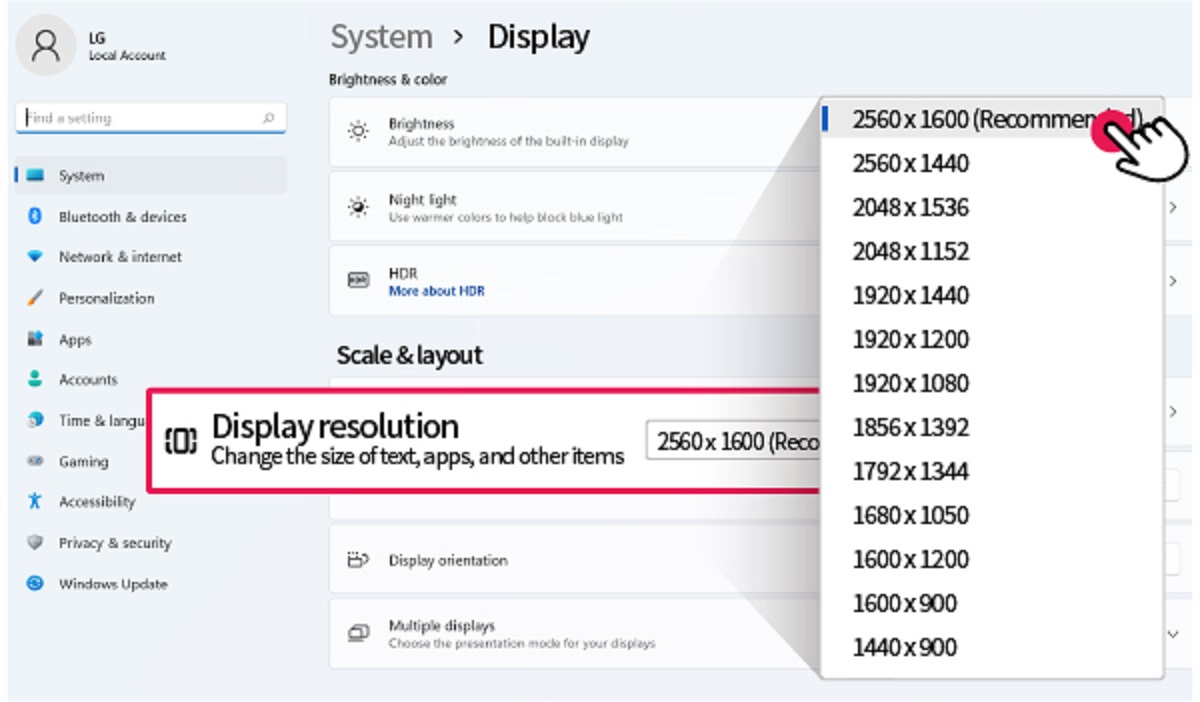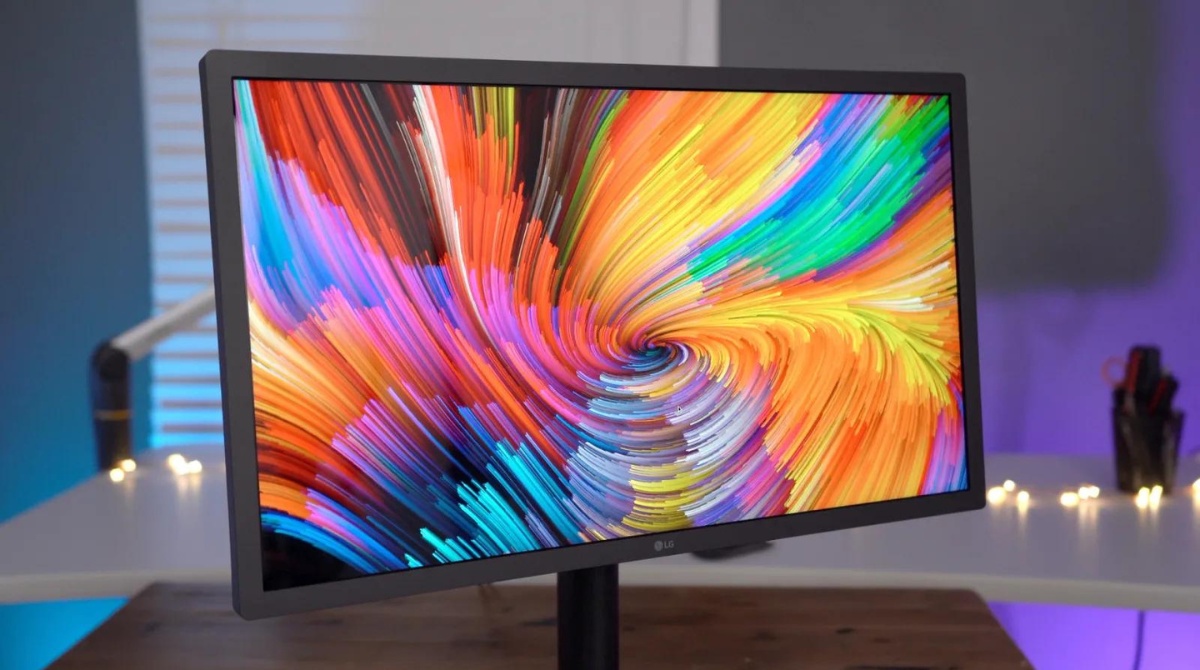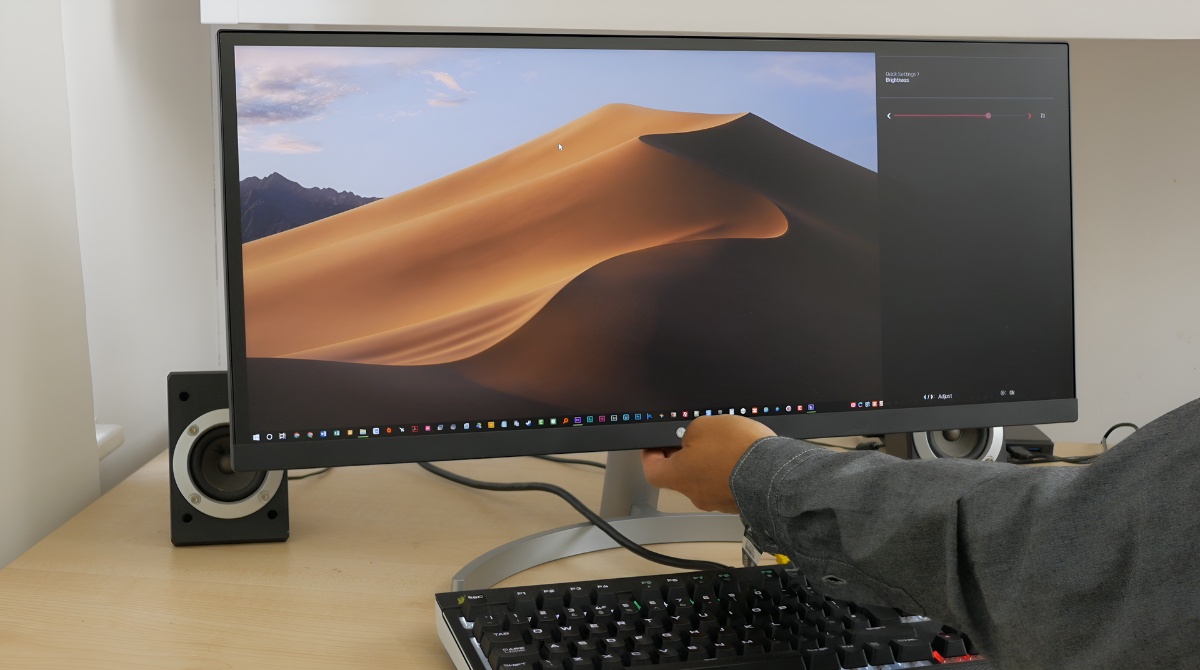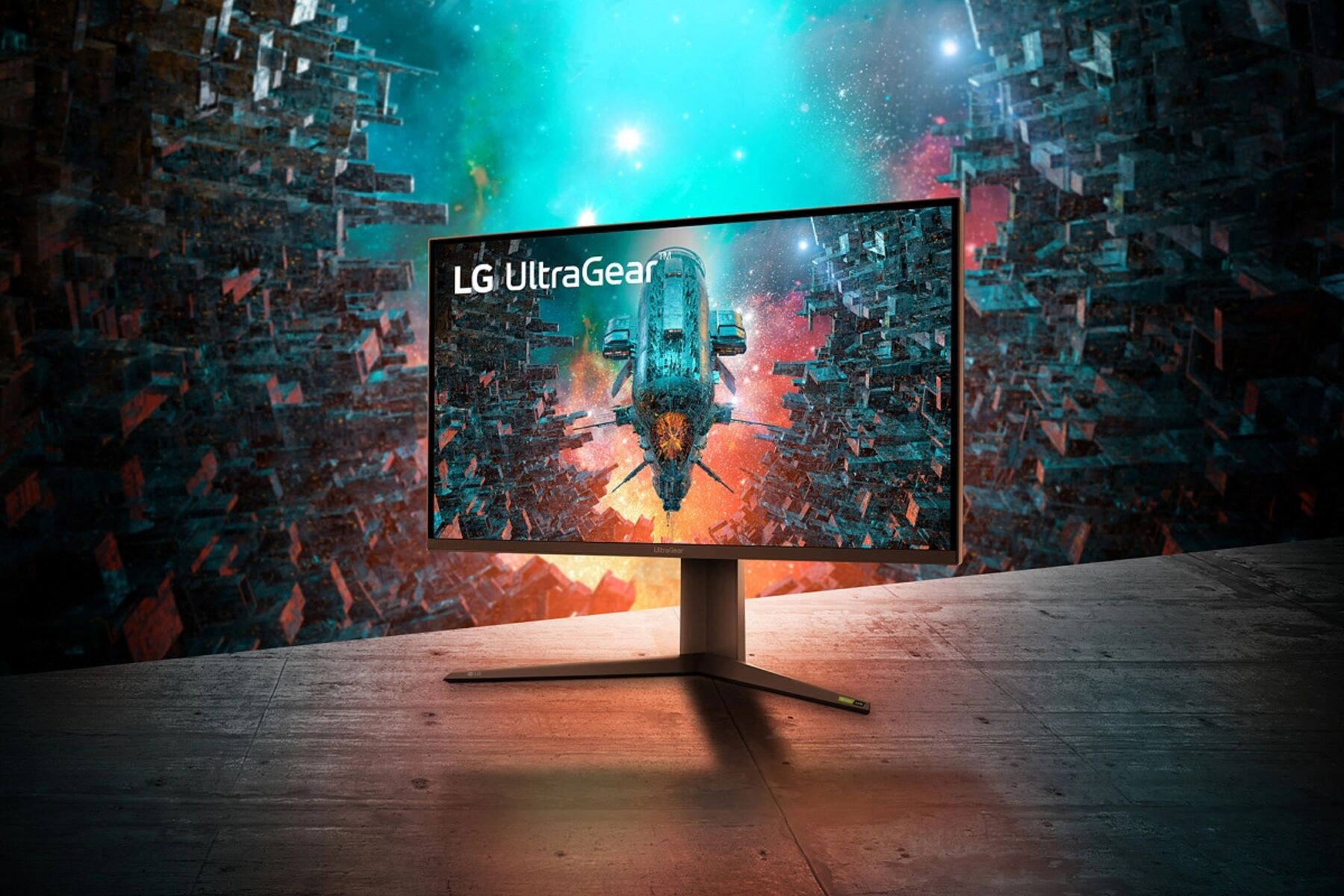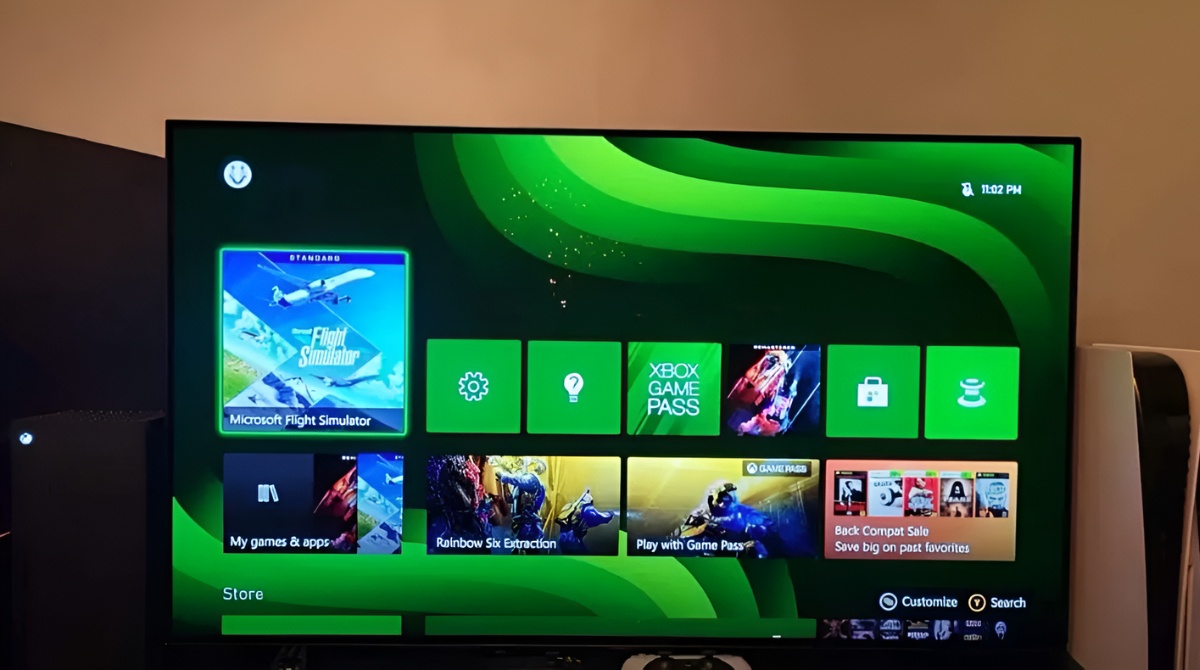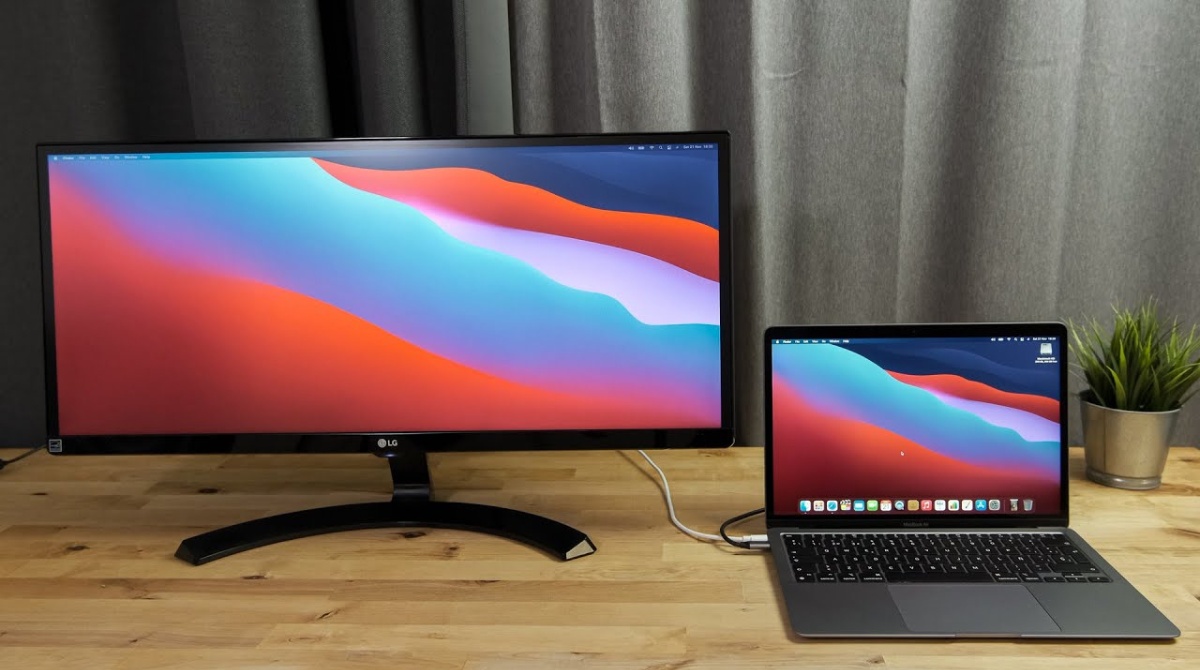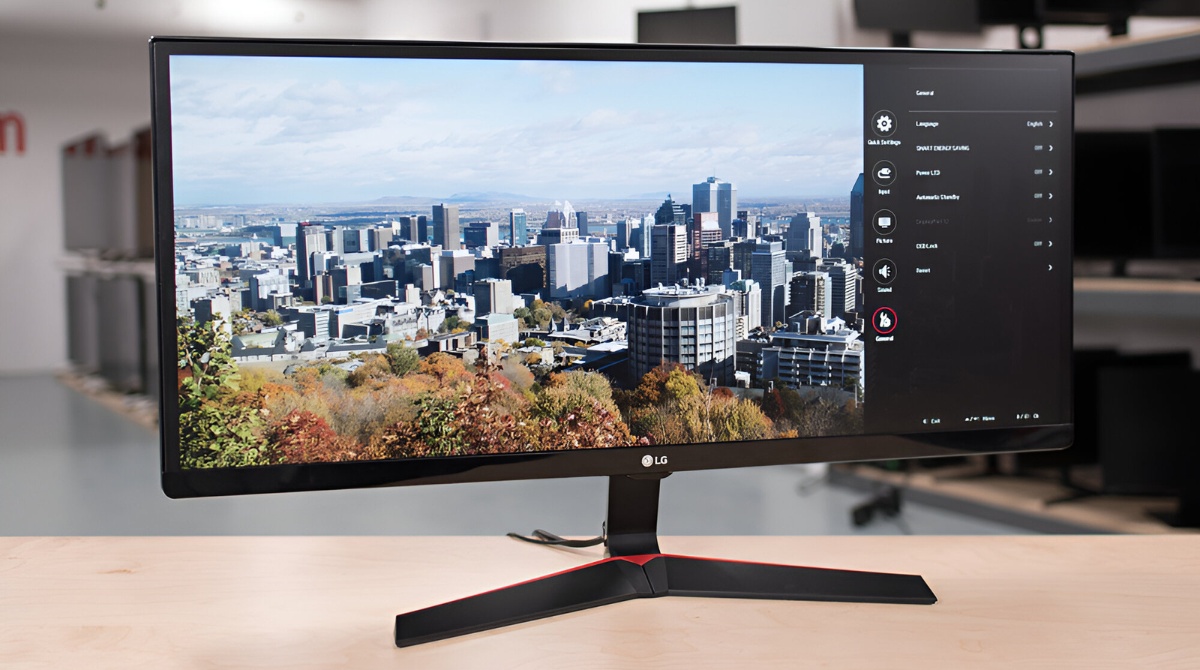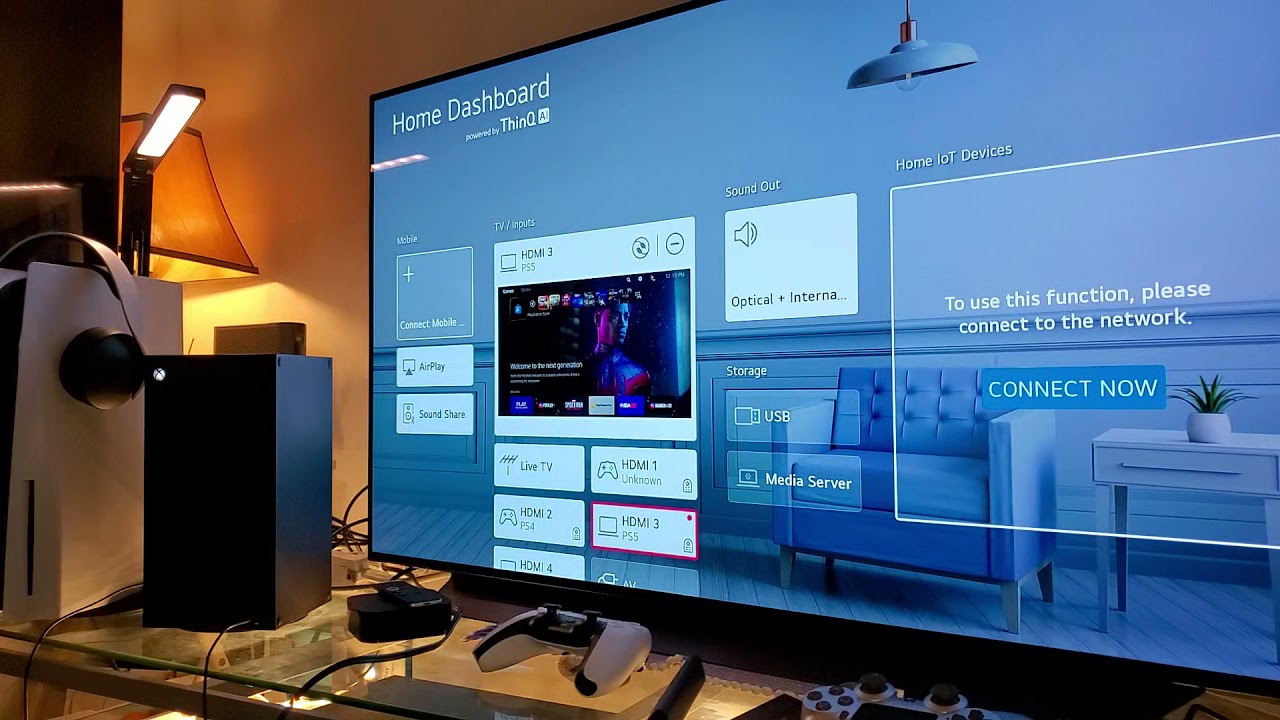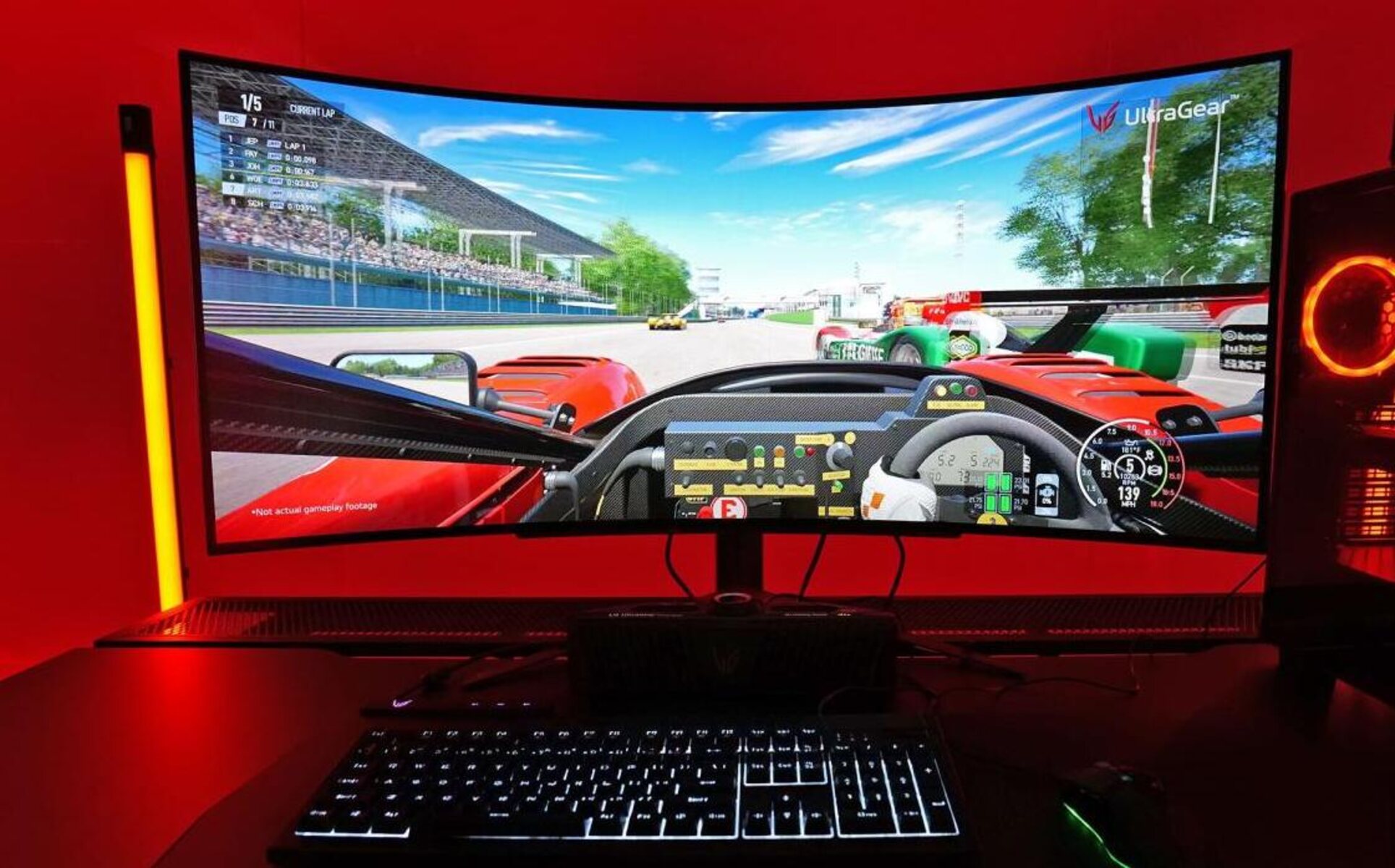Introduction
Welcome to a quick guide on how to change the resolution on an LG monitor. Whether you’ve recently upgraded your monitor, are experiencing display issues, or simply want to optimize your viewing experience, adjusting the resolution can make a significant difference. The resolution of a monitor refers to the number of pixels it can display horizontally and vertically.
By changing the resolution, you can alter the clarity, sharpness, and overall quality of the visuals on your LG monitor. Higher resolutions offer more detailed and precise imagery, while lower resolutions can make objects appear larger and easier to read.
In this step-by-step tutorial, we will walk you through the process of accessing the monitor’s settings, navigating the menu options, adjusting the resolution, and saving the changes. Whether you’re using a basic LG monitor or a high-end model, the steps outlined here should apply to most LG monitors.
Before we begin, keep in mind that altering the resolution may affect the aspect ratio of the display. It’s essential to choose a resolution that matches your monitor’s native aspect ratio to avoid stretching or distortion of the visuals. Additionally, be aware that changing the resolution might require your computer’s graphics drivers to be updated for optimal performance.
Now, let’s dive into the step-by-step process of changing the resolution on an LG monitor and unlock the full potential of your visual experience.
Step 1: Accessing the monitor settings
The first step to change the resolution on an LG monitor is to access the monitor’s settings. To do this, follow the instructions below:
- Make sure your LG monitor is turned on and connected to your computer.
- Locate the buttons or touch-sensitive controls on the front or side of the monitor. These buttons are typically labeled with icons or text.
- Press the menu button, often represented by an icon that looks like a miniature version of a computer monitor.
- A menu screen will appear on your LG monitor’s display, allowing you to navigate and adjust various settings.
- Use the navigation buttons or touch-sensitive controls to scroll through the available options and locate the “Settings” or “Display Settings” option. The specific label may vary depending on your LG monitor model.
- Once you’ve highlighted the “Settings” option, press the appropriate button to select it. This will open the submenu containing the resolution settings.
It’s essential to note that the exact process to access the monitor settings may vary slightly depending on the model of your LG monitor. If you’re unsure which buttons to press or encounter any difficulties, refer to your monitor’s user manual for detailed instructions.
Now that you’ve successfully accessed the monitor settings, you’re ready to move on to the next step: navigating the menu options and adjusting the resolution to your desired setting.
Step 2: Navigating the menu options
Now that you have accessed the monitor settings on your LG monitor, it’s time to navigate the menu options to find the resolution settings. Follow the steps below:
- Using the navigation buttons or touch-sensitive controls on the monitor, scroll through the menu options until you find the “Display” or “Screen” option. This is where you will typically find the resolution settings.
- Select the “Display” or “Screen” option by pressing the appropriate button.
- Once you’ve entered the “Display” or “Screen” submenu, locate the “Resolution” or “Resolution Settings” option.
- Select the “Resolution” or “Resolution Settings” option to access the available resolution options.
- A list of supported resolutions will appear on the screen. This list may include standard resolutions such as 1920×1080 (Full HD), 2560×1440 (QHD), or 3840×2160 (4K Ultra HD), depending on the capabilities of your LG monitor.
- Take note of the current resolution setting to reference it later or make changes if necessary.
During this process, it’s important to familiarize yourself with the menu navigation buttons or touch-sensitive controls on your LG monitor. The specific layout and functionality may vary depending on your model. If you need assistance, consult the user manual that came with your LG monitor.
Now that you’ve successfully located the resolution settings, it’s time to move on to the next step: adjusting the resolution to your desired setting.
Step 3: Adjusting the resolution
With the resolution settings menu open on your LG monitor, you’re now ready to adjust the resolution to your desired setting. Follow the steps below:
- Using the navigation buttons or touch-sensitive controls, scroll through the list of available resolutions.
- Highlight the desired resolution by selecting it with the appropriate button. If you’re unsure which resolution to choose, consider your preferences, monitor capabilities, and the aspect ratio of your monitor.
- After selecting the desired resolution, preview the changes on your LG monitor’s display. This will allow you to see how the new resolution affects the visual clarity and overall appearance of the screen.
- If you’re satisfied with the selected resolution, press the appropriate button to confirm the change.
- Your LG monitor will apply the new resolution, and you will notice an immediate difference in the visuals displayed on the screen.
- If you’re not satisfied with the selected resolution or encounter any issues, you can repeat the process to choose a different resolution.
It’s essential to choose a resolution that matches your LG monitor’s native aspect ratio to avoid stretching or distortion of the visuals. If you’re uncertain about the native aspect ratio, refer to your monitor’s specifications or user manual.
Keep in mind that some LG monitors may offer additional options to customize the display settings further, such as brightness, contrast, or color adjustments. Feel free to explore these options to fine-tune your viewing experience.
Now that you have successfully adjusted the resolution on your LG monitor, it’s time to move on to the final step: saving the changes to ensure they persist.
Step 4: Saving the changes
After adjusting the resolution on your LG monitor to your desired setting, it’s important to save the changes to ensure they persist. Follow the steps below to save the resolution settings:
- Once you have selected the desired resolution, locate the “Save” or “Apply” option within the resolution settings menu.
- Highlight the “Save” or “Apply” option by selecting it with the appropriate button.
- Press the button to save the changes and exit the resolution settings menu.
- Your LG monitor will then save the new resolution setting and apply it as the default display option.
- Take a moment to visually inspect the display and ensure the new resolution is to your satisfaction.
By saving the changes, you ensure that your LG monitor maintains the chosen resolution each time you power it on or wake it from sleep mode.
If you ever wish to revert to the previous resolution or make further adjustments, you can repeat the steps outlined in this guide to access the resolution settings and make the necessary changes.
Now that you have successfully saved the changes to the resolution settings on your LG monitor, you can enjoy a visually enhanced experience with improved clarity and sharpness.
Conclusion
Changing the resolution on an LG monitor is a simple process that can significantly improve your visual experience. By adjusting the resolution, you can enhance the clarity, sharpness, and overall quality of the visuals displayed on your monitor.
In this guide, we covered the step-by-step process of changing the resolution on an LG monitor. We began by accessing the monitor settings, navigating the menu options, and locating the resolution settings. Then, we adjusted the resolution to our desired setting and saved the changes to ensure they persist. Throughout each step, it’s important to familiarize yourself with the buttons or touch-sensitive controls on your LG monitor to navigate the menus effectively.
Remember, selecting the appropriate resolution for your monitor’s native aspect ratio is crucial to avoid stretching or distortion of the visuals. If you’re unsure about the native aspect ratio, consult your monitor’s specifications or user manual.
With the resolution adjusted to your preference, you can now enjoy a visually optimized experience with improved clarity and sharpness. If you ever wish to make further changes or revert to the previous resolution, you can easily access the settings and adjust as needed.
We hope that this guide has been helpful in assisting you with changing the resolution on your LG monitor. Now, go ahead and dive into your favorite content, whether it’s gaming, multimedia, or work, and enjoy a stunning visual experience on your LG monitor!







